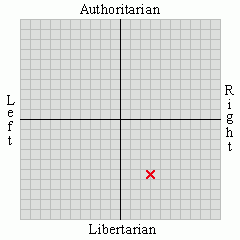 Being good at math isn’t enough to make math useful. Blogbuddy bobvis points out that being good at math is, even if not inherently good, an important thing. But the real test in math is word problems – understanding how a mathematical issue applies in the real world, so that you can understand the relationship between things. This seemingly sinister story helps illustrate why. The way to understand the story is to apply the theorem pictured at left, the Bayes Theorem.
Being good at math isn’t enough to make math useful. Blogbuddy bobvis points out that being good at math is, even if not inherently good, an important thing. But the real test in math is word problems – understanding how a mathematical issue applies in the real world, so that you can understand the relationship between things. This seemingly sinister story helps illustrate why. The way to understand the story is to apply the theorem pictured at left, the Bayes Theorem.This detailed step-by-step explanation of how to use the theorem claims that most doctors get the answer to this hypothetical wildly wrong:
1% of women who participate in routine screening have breast cancer. 80% of women with breast cancer will get positive mammographies. 9.6% of women without breast cancer will also get positive mammographies. Jane had a positive mammography in a routine screening. What is the probability that Jane actually has breast cancer?*
Mathemeticians call this sort of thing “Bayesian” and the trick is not so much multiplying probabilities but understanding the relationship of the various probabilities within the whole. It requires both careful reading, logic, and the ability to recall what the overall problem is. The formula above is a mathematically precise way of handling problems like these.
While the formula itself is very intricate and complex, the basic idea behind it seems almost intuitive to me -- just understand that two variables independently co-exist in a single population. You can't exceed 100% of anything. Yet when balancing two related variables within a single population, apparently, a lot of people -- smart, educated people -- get confused and can't handle what's going on. What’s important about this is that it demonstrates not only how we know what we do, but also that with understanding, we can correctly perceive the world for what it truly is. What you do with the power this gives you is entirely up to you.
* Try and figure out the answer on your own first. If you select the text of this footnote, the correct answer will be revealed. The correct answer is: one in thirteen, or about 8.7%. You can readily see how understanding this would be important for a doctor in dispensing advice to his patient about getting treatment or new tests.







No comments:
Post a Comment